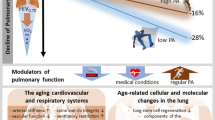Summary
The purpose of this study was to determine the optimal intensity of exercise necessary to prevent the postmenopausal bone loss on the basis of anaerobic threshold (AT). Thirty-three postmenopausal women were randomized to control (group C: n=12) or two exercise groups (group H and group M). All women performed a treadmill exercise test, and the AT was measured by expired gas analysis. The exercise regimen consisted mainly of walking at a speed that kept the exercise heart rate above the AT (group H: n=12) or below the AT (group M: n=9). Exercise was performed for 30 minutes, three times a week for 7 months. The bone mineral density (BMD) of the lumbar vertebrae was measured using dual energy X-ray absorptiometry. The BMD level in group C decreased by 1.7±2.7%, but there was a significant increase of 1.1±2.9% in group H. In group M there was a decrease of 1.0±3.1% which did not differ from group C. In group C, serum osteocalcin and urinary hydroxyproline excretion were significantly increased, but no changes were seen in either of the exercise groups. Urinary calcium significantly decreased in the exercise groups. We conclude that short-term (7 months) exercise with intensity above the AT is safe and effective in preventing postmenopausal bone loss.
Similar content being viewed by others
References
Ettinger B, Genant HK, Cann CE (1987) Postmenopausal bone loss is prevented by treatment with low-dosage estrogen with calcium. Ann Intern Med 106:40–45
Simkin A, Ayalon J, Leichter I (1987) Increased trabecular bone density due to bone-loading exercises in postmenopausal osteoporotic women. Calcif Tissue Int 40:59–63
Smith EL, Smith PE, Ensign CJ, Shea MM (1984) Bone involution decrease in exercising middle-aged women. Calcif Tissue Int 36:s129–s138
Krolner B, Toft B, Nielsen SP, Tondevold E (1983) Physical exercise as prophylaxis against involutional vertebral bone loss: a controlled trial. Clin Sci 64:541–546
Hasegawa A, Hatori M, Imanari T, Fukuda T, Yamaguchi E, Yamauchi Y, Naito S, Amano M, Nakano A, Suzuki T, Murata K (1991) Reproducibility and effectiveness of ramp protocol with treadmill exercise test. Jpn J Appl Physiol 21:11–15
Borg G (1970) Perceived exercise as an indicator of somatic stress. Scand J Rehab Med 2:92–98
Caiozzo VJ, Davis JA, Ellis JF, Azus JL, Vandagriff R, Prietto CA, McMaster WC (1982) A comparison of gas exchange indices used to detect the anaerobic threshold. J Appl Physiol 53: 1184–1189
Smith EL, Reddan W, Smith PE (1981) Physical activity and calcium modalities for bone mineral increase in aged women. Med Sci Sports Exerc 13:60–64
Margulies JY, Simkin A, Leichter I, Bivas A, Steinberg R, Giladi M, Stein M, Kashtan H, Milgrom C (1986) Effect of intense physical activity on the bone-mineral content in lower limbs of voung adults. J Bone Joint Surg Am 68:1090–1093
Cavanagh DJ, Cann CE (1988) Brisk walking does not stop bone loss in postmenopausal women. Bone 9:201–204
Sandler RB, Cauley JA, Hom DL, Sashin D, Kriska AM (1987) The effects of walking on the cross-sectional dimensions of the radius in postmenopausal women. Calcif Tissue Int 41:65–69
White MK, Martin RB, Yeater RA, Butcher RL, Radin EL (1984) The effects of exercise on the bones of postmenopausal women. Int Orthop 7:209–214
Dalsky GP, Stocke KS, Ehsani AA, Slatopolsky E, Lee WC, Birge SJ (1988) Weight-bearing exercise training and lumbar bone mineral content in postmenopausal women. Ann Intern Med 108:824–828
Chow R, Harrison JE, Notarius C (1987) Effect of two randomised exercise programmes on bone mass of healthy postmenopausal women BMJ 295:1441–1444
Beverly MC, Rider TA, Evans MJ, Smith R (1989) Local bone mineral response to brief exercise that stresses the skeleton. BMJ 299:233–235
Weltman A, Weltman JY, Schurrer R, Evans WS, Veldhuis JD, Rogol AD (1992) Endurance training amplifies the pulsatile release of growth hormone: effects of training intensity. J Appl Physiol 72:2188–2196
Epstein S (1988) Serum and urinary markers of bone remodeling: assessment of bone turnover. Endocrinol Rev 9:437–449
Kelly PJ, Pocock NA, Sambrook PN, Eisman JA (1989) Age and menopause-related changes in indices of bone turnover. J Clin Endocrinol Metab 69:1160–1165
Delmas PD, Wahner HW, Mann KG, Riggs BL (1983) Assessment of bone turnover in postmenopausal osteoporosis by measurement of serum bone Gla-protein. J Lab Clin Med 102:470–476
Brown JP, Delmas PD, Malaval L, Edouard C, Chapuy MC, Meunier PJ (1984) Serum bone Gla-protein: a specific marker for bone formation in postmenopausal osteoporosis. Lancet 1: 1091–1093
Author information
Authors and Affiliations
Rights and permissions
About this article
Cite this article
Hatori, M., Hasegawa, A., Adachi, H. et al. The effects of walking at the anaerobic threshold level on vertebral bone loss in postmenopausal women. Calcif Tissue Int 52, 411–414 (1993). https://doi.org/10.1007/BF00571327
Received:
Revised:
Issue Date:
DOI: https://doi.org/10.1007/BF00571327




